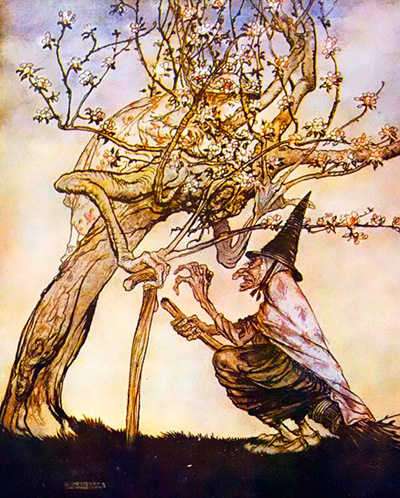What, I can here you asking are these? I have included a few pages about poppets
in my new book Faerie Flora and to be honest didn't think much more about
them until I was watching a film called The Crucible a few days ago: it was about the
Salem Witch trials in America. A poppet was found in a woman's house and they
believed it proved that she was a witch. Then I was reading a book about the
Witches in Wessex and it was mentioned in there but for a different reason.
So..
Poppets, also known as mommets, are lifelike figures usually made of cloth but can also
be of clay, wax,straw etc. They are made to represent a certain person and by using
their hair, toenail clippings,saliva etc it reinforces the bond between the poppet
and the intended recipient. Life must be breathed into the poppet and the doll
then named. Poppets are used in in ritual magic and spell craft and have been in
use for thousands of years.
Interestingly tho in the film the women referred to the doll as a poppet but
meaning just a simple child's toy which in fact it was.
In 'Witches of Wessex' by Olive Knott, which I think was published around the 1950's,
she recounts an old tale about a mommet.
A Somerset farmer believed that he had been overlooked by an old couple in the
village since for some time he had ill luck with his cattle and crops. Consequently he
threatened the two old people, informed the police and the case was brought to court.
The farmers wife appeared on behalf of the husband and on being asked the question,
'Does your husband really believe that he has been bewitched by these people' answered,
'Yes he hung a mommet in a tree, but it didn't work.'
The mommet was a stuffed rag doll, another form of the waxen image, which
was supposed to represent the ill wisher.
Those who believed themselves to be overlooked would dig pins into the figure and
eventually burn it, This they considered was effectual in breaking the spell of the ill wisher.
The term mommet is still used in Wessex although it's original use has died out.
A mother annoyed with one of her children will call him a mommet but from this
word like many which have been incorporated into every day language the initial
sting has been entirely removed.







